This was published 1 year ago
This city botanic garden tour is eye-opening and mouth-watering
Tjimari Sanderson-Milera stops by the banksia plant. “The needle inside was used to sew kangaroo skins into a coat,” he says. “They’d use tendons to sew it together.”
Ordinarily, a stroll around the Adelaide Botanic Garden is pleasant. It’s a delightfully sprawly, but well-maintained, idyll off the city centre’s north-eastern corner. Tjimari’s job is to make that stroll genuinely fascinating, explaining what South Australia’s Indigenous people have used the plants and trees for over the centuries.
To an ignoramus who is ordinarily content to just look at the pretty gardens, Bookabee Australia’s Indigenous-slanted tour is a relentlessly interesting eye-opener. Yakka tree bark put into a fire creates a clean smoke that helps clear sinuses. Holes in the ribbon gums have been dug out by a witchetty – they have a “nutty, chicken-like taste”. And the leaves of the native ginger tree are good for wrapping up food.
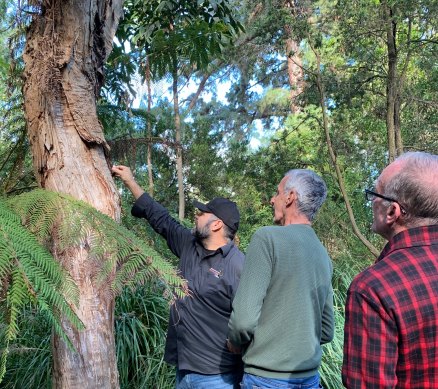
Bookabee tours … plants had many different Indigenous uses.
One aspect that’s consistently surprising is that plants that are not edible can be used to get food anyway. The parapara tree, for instance, has no nutritional value. But it does have sticky pods that can be put in a bowl to lure in hungry reptiles and birds. The resin gets stuck in the bird’s wings, making it temporarily unable to fly and much easier to attack with a club.
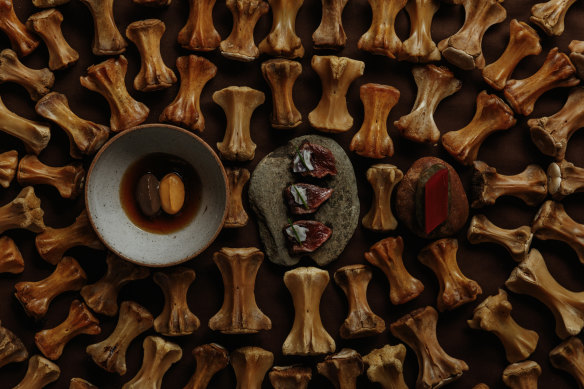
Restaurant Botanic has aimed for the global top tier and succeeded.
“There’s an urban myth that this is where the person who invented the Post-It note got their inspiration,” says Tjimari. “In my head, it makes sense.”
There are also, apparently, two versions of the native pepperberry tree. The rounded leaf one is fine to use for flavouring, but the narrow leaf incarnation is poisonous. So it would be put in a water source from where animals are known to drink. “It makes the kangaroo dopey and easier to chase,” says Tjimari.
Using the plants of the Adelaide Botanic Garden shouldn’t be seen as a solely historic thing, however.
Restaurant Botanic inside the old rotunda is fully embracing its licence to forage in the garden. Since coming under new ownership in July 2021, Restaurant Botanic has aimed for the global top tier and succeeded. It was named Gourmet Traveller’s Australian restaurant of the year in September 2022, and the ingredients provided by the garden are critical to both its ethos and achievements.
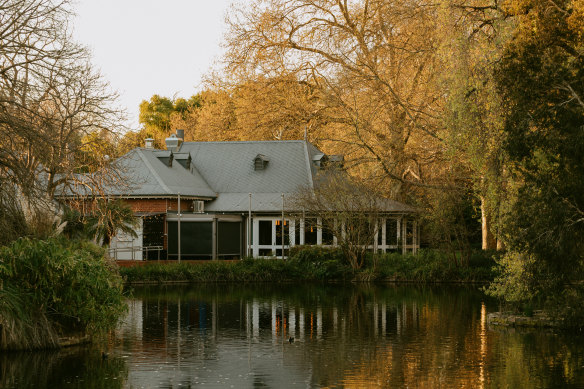
Garden setting … Restaurant Botanic.
In charge is Justin James, formerly executive chef of Vue de Monde in Melbourne, and he finds that using the foraged ingredients gives a sense of narrative to the 20-dish dinner.
“The gardens tell a story of what’s actually edible here,” he says. “It’s a living, breathing museum.”
It’s not just about working the likes of lemon myrtle, wattle seeds and quandongs into dishes, however. Restaurant Botanic is also using finds from the garden as food delivery mechanisms. That might mean tipping a Moreton Bay fig leaf of tea tree-flavoured muntrie berries into the mouth, or freezing cream on a bunya pine branch, then using it as an ice lolly.
Some innovation has been forced by the setting, too. “We can’t wait for plums to ripen on the tree. The birds and bats will get them,” says Justin. “So we take a plum with a sour flavour and work with it, getting a whole new flavour. In some ways it’s more primal, I guess.”
It’s an approach that sees jars of pickled riberries and marigold vinegar stacked high on shelving inside the restaurant, leaves turned into oils and gargantuan overhead flower displays changed every two weeks.
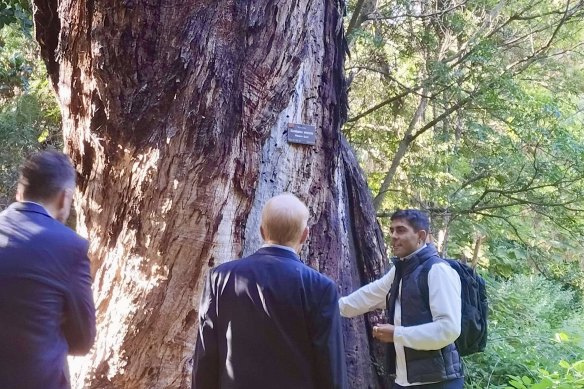
Every tree tells a story.
The Adelaide Botanic Garden’s embrace of ancient Aboriginal knowledge and modern experimentalism is allowing visitors to see it in a new light. And it is encouraging many to return for a second look.
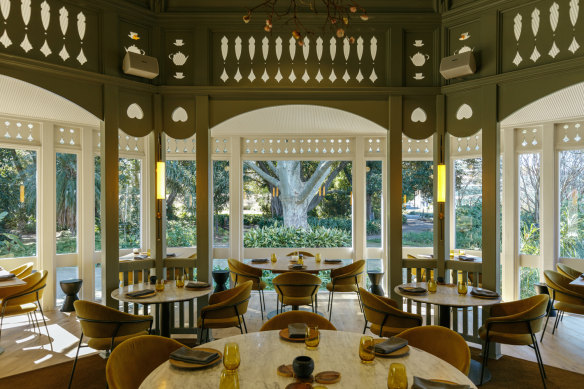
The light-filled restaurant.
Justin James has noticed it, too. “I see a lot of guests the next day, walking through, looking at the plants they’ve eaten.”
THE DETAILS
TOUR
Bookabee Australia runs Indigenous walking tours in the Adelaide Botanic Garden for $350 a group. See bookabee.com.au
EAT
Degustation menu at Restaurant Botanic from $360. See restaurantbotanic.com.au
FLY
Qantas flies direct from Sydney and Melbourne. See qantas.com
STAY
The Oval Hotel at the nearby Adelaide Oval has doubles for from $200 a night. See ovalhotel.com.au
The writer was a guest of the South Australian Tourism Commission.
Sign up for the Traveller Deals newsletter
Get exclusive travel deals delivered straight to your inbox. Sign up now.